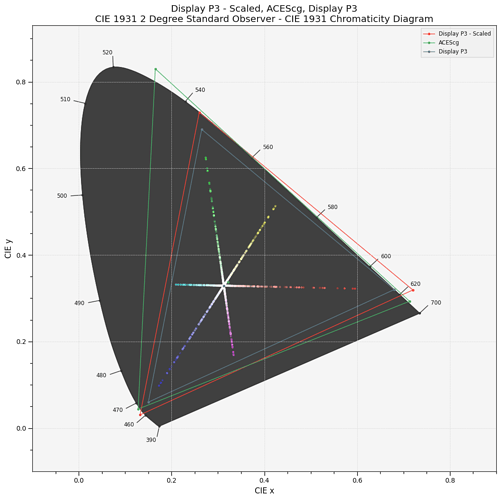A potentially scaled Display P3 via optimization:
-------------------
Primaries : [[ 0.72015817 0.319016 ]
[ 0.2597848 0.72946937]
[ 0.13221145 0.03058931]]
Whitepoint : [ 0.3127 0.329 ]
Whitepoint Name : D65
Encoding CCTF : None
Decoding CCTF : None
NPM : None
NPM -1 : None
Derived NPM : [[ 0.51530595 0.26043935 0.17471063]
[ 0.22827047 0.73130734 0.0404222 ]
[-0.0280309 0.01077291 1.10631574]]
Derived NPM -1 : [[ 2.28016893 -0.80716302 -0.330595 ]
[-0.71531088 1.62136533 0.0537218 ]
[ 0.06473845 -0.0362395 0.89500163]]
Use Derived NPM : True
Use Derived NPM -1 : True
Cheers,
Thomas
